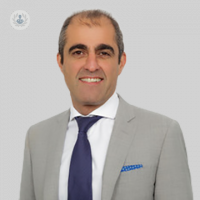Breast implant-related ALCL (anaplastic large cell lymphoma)
Written in association with:Since 2011, there has been a known link between breast implant and Anaplastic Large Cell Lymphoma (ALCL). The risk of this condition is low but there are symptoms to be aware of. Mr Navid Jallali clarifies the symptoms and treatment of BI-ALCL.

What is breast implant-related anaplastic large cell lymphoma (BI- ALCL)?
BI-ALCL (Breast Implant-Associated Anaplastic Large Cell Lymphoma) is a type of non-Hodgkin’s lymphoma i.e. cancer of the immune system. The association between breast implants and BI-ALCL was first recognised in 2011.
Is it like breast cancer?
BI-ALCL is not a breast cancer and breast implants are not associated with this form of tumour.
In most cases, BI-ALCL is localised around the implant but in some rarer cases, it may spread throughout the body.
What is the risk of having BI-ALCL?
The risk of BI-ALCL is low, with an estimated prevalence of around 1:6000 –1:30000.
Textured implants appear to have a greater risk of BI-ALCL, but the cause of this is not clear. It appears that the fill of breast implant i.e. silicone vs saline does not affect the risk of developing BI-ALCL.
What are the symptoms of BI-ALCL?
Symptoms of BI-ALCL are usually acute swelling of the breast (seroma) and very occasionally, a lump in the breast. The median time from breast implant to the appearance of BI-ALCL is around 8-10 years.
What should someone with fitted textured breast implants do?
The current recommendation is that there is no need to remove or replace textured implants unless you have the symptoms described above. If you do develop these symptoms, then we would recommend you seek medical advice immediately. Generally, seromas are examined with an ultrasound and MRI scans are used to examine breast lumps.
If BI-ALCL is confirmed, treatment requires the surgical removal of the implant and its scar tissue (a capsulectomy) and if the lymph nodes are enlarged, they also might need removing.
Mr Jallali is a leading surgeon with experience in several types of breast surgery. Click here to learn more and to get in touch.



